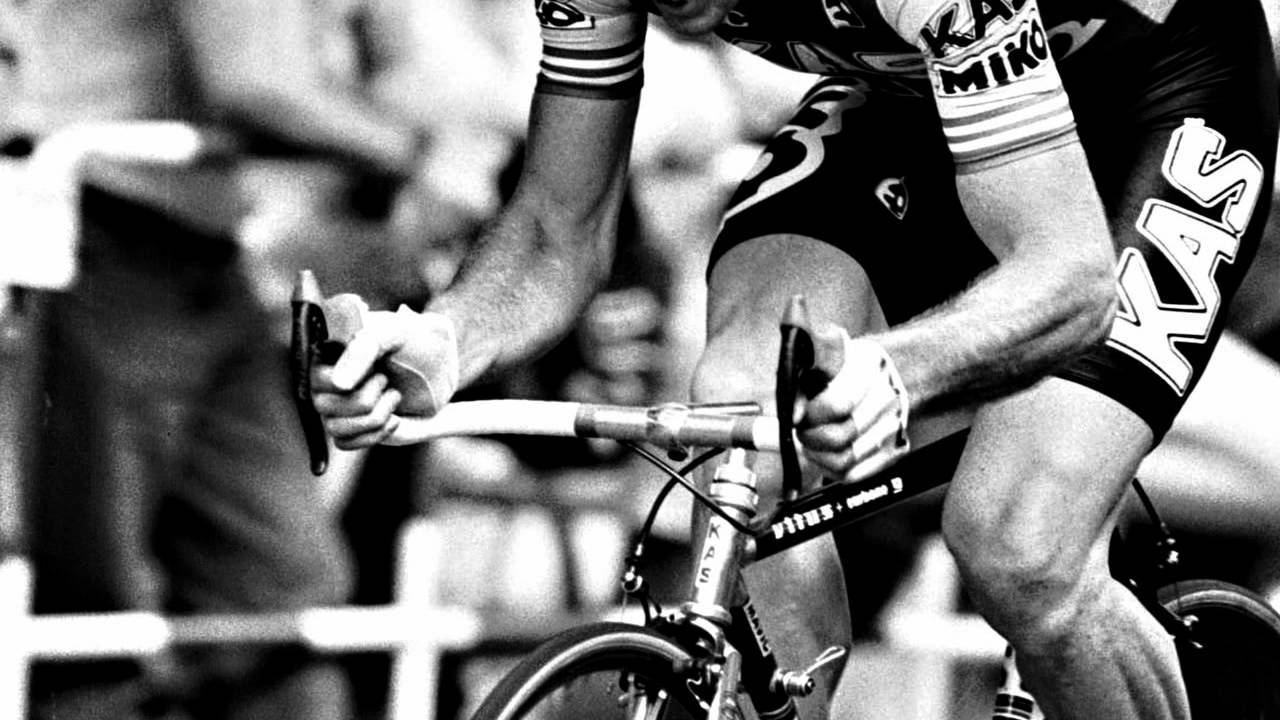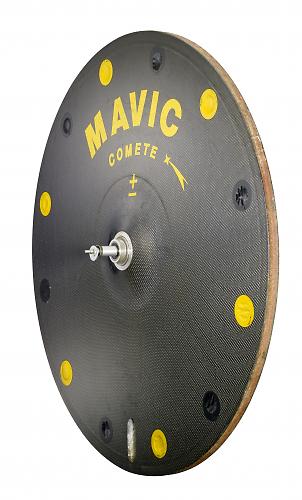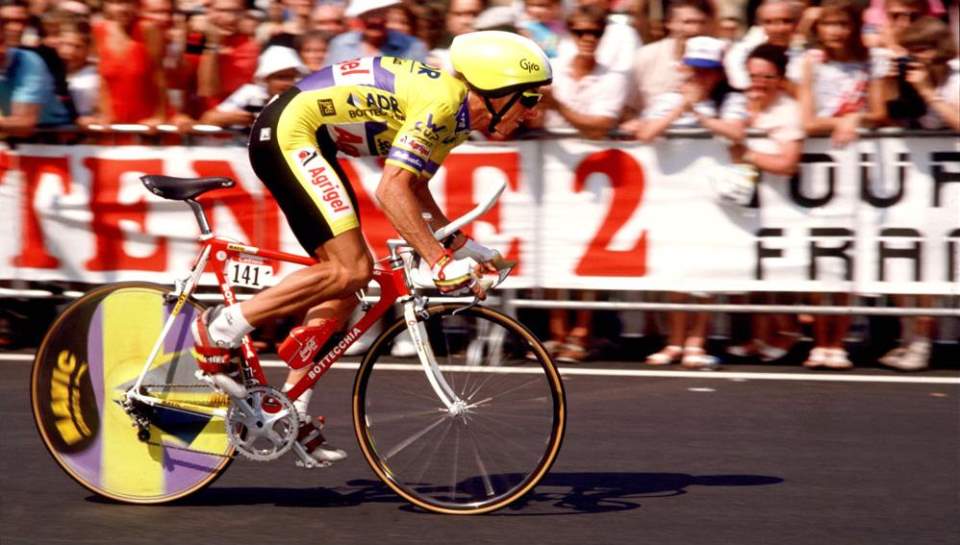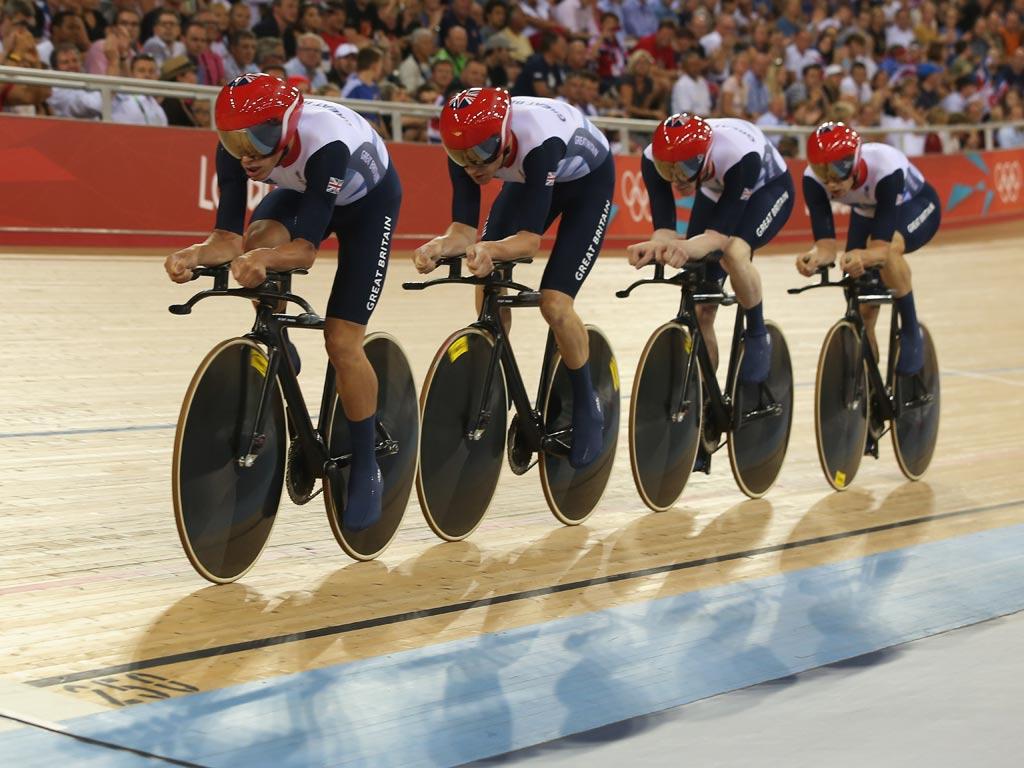The Comete Disc bucked the trend for spoked wheels, had a peculiar shape and started a row between the British and the French. With more Olympic medals than Michael Phelps, Carl Lewis and Sir Chris Hoy combined, here's the history of this design icon.

1984 was a bumper year for Sean Kelly. He took victory in Paris Roubaix and Leige Bastonge Leige, podium'd at two other monument races as well as clocking a record breaking 124 km/h top speed off the Col de Joux Plane in the Tour de France. He did all this on a Mavic equipped bicycle. From his rims to his brakes, the French brand adorned his bike and the Irishman's break through year was yet another jewel in their sparkling yellow crown. The best, however, was yet to come. Whilst Sean was tearing across the cobbles, engineers at Mavic were busying themselves at the Aerotechnical Institute in Saint-Cyr putting the finishing touches on the world's first disc wheel for commercial use.
Mavic's Comete carbon fiber disc wheel launched in the summer of '84 with great fanfare, little did anyone know that the revolutionary wheel was a project that had taken over 10 years to come to fruition. As far back as 1973, Mavic were testing fibre-glass disc wheels at the Study Bureau. In the mid-seventies Mavic hadn't yet begun to offer its famous Neutral Service race assistance and brand known for its high quality wheels didn't even have a complete wheelset in its product offering but instead rims and hubs for mechanics to lace their own.
Shaped like a lentil?
That was set to change when Mavic engineers came across the notion that complete wheels could make faster bike riders and a lenticular-shaped wheel could slice through the air the fastest. Lenticular, as the name suggests, means shaped like a lentil, i.e. a biconvex shape, rather than flat. Disc wheels work by smoothing the passage of side wind. Less wind turbulence means less drag and faster times. The lenticular flanges create negative drag under some wind conditions, boosting speed and improving acceleration.
A flat carbon disc wheel has an aero drag of 97grams. This compares to an aero drag of 154grams for a standard 18 spoke wheel.

The final commercial version years later did away with fibre glass, kept the revolutionary lenticular shape and was constructed from horrendously expensive but stiff, carbon fibre. The rim and hub were joined together with two specially shaped carbon discs. The Mavic Comete debuted in the Tour de France and by the end of the season professional cyclists jumped at the chance to ride the expensive yet race proven wheels in important time trials and prologues.
The trend was set and other manufacturers soon followed suit some with flat discs which didn't reduce drag as much as the lenticular shape and others attempting to create their own lenticular 'Comete'.

The following year the Comete + and - appeared. The wheel featured holes spaced equally around the wheel. The holes or 'cells' could hold a steel weight from 130g to 780g, creating ballast which riders could change depending on the event. The Comete Disc Wheel continued to rack up victories including contributing to Greg Lemond's epic eight second winning margin at the 1989 Tour de France.
The era of track golds
That grounding in aerodynamics translated well to the track. In 1992 Mavic’s tri-spoke 3G wheel and Comete disc wheel adorned Chris Boardman’s bike in his iconic 4km pursuit win at the Barcelona Olympics. In 1994 Boardman was back with his Mavic wheels recording the fastest average speed in a prologue in the Tour de France, a whopping 34.2 miles per hour.

Success continued on the Olympic stage, first in Atlanta and then at the Sydney and Athens games. By the time the 2008 Beijing Olympics rolled round it was easier to spot the track riders without the medal winning wheels than those who were.
The most decorated hardware ever
In 2012, as the London Games approached, the cycling gossip columns were awash with stories of Team GB using magic wheels made by Mavic. The French cycling team all but accused the victorious British of cheating, saying they were suspicious about the kit and wheels being used. The other sponsored nations including Australia were whipped up into a frenzy amongst the speculation that the wheels fitted to Sir Chris Hoy and Ed Clancy's bike were equipped with faster Mavic wheels.
Despite there being no truth in the rumours, Team GB allowed the speculation to cause unrest amongst the other nations and staff were seen putting their standard sponsor issue Mavic wheels in different bags to rattle the opposition further.
After just a week at the London Games, the Comete had racked up 27 Olympic medals. By our calculations over its thirty year existence, the Comete may just be the most decorated piece of sporting equipment ever!
